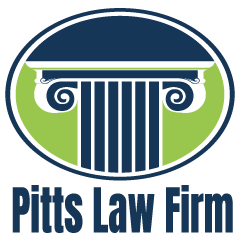Author: Tonya Willis Pitts
Article Summary:
There are four major changes to consumer bankruptcy which were included in the Consolidated Appropriations Act, passed by Congress on December 21, 2020. While these changes are temporary and will expire on December 27, 2021 or December 27, 2022, they are important to know for consumers in bankruptcy. They may provide a strategy for when consumers file bankruptcy.
Article:
The purpose of the Bankruptcy Code is to provide relief from debts. During the COVID-19 Pandemic, Congress had passed several acts to provide relief from the pandemic. The most recent act is the Consolidated Appropriations Act, enacted on December 21, 2020 (“CAA”). Section 1001 of Title X of the CAA provides four major changes to consumer bankruptcy that every consumer considering bankruptcy should know.
First, Courts may, after a hearing, grant Chapter 13 discharge to debtors who have defaulted on multiple mortgage payments. The CAA gives courts temporary discretion to grant a Chapter 13 discharge when a debtor has defaulted on up to three monthly residential mortgage payments after March 13, 2020. Debtors can also request discharge when their residential property is in a cure and maintain plan and a loan modification or forbearance. This provision ends on December 27, 2021.
To obtain the Chapter 13 discharge, the debtor must prove that the missed payments were directly or indirectly caused by a COVID-19 hardship. The courts have the final discretion to gran the relief. However, courts will likely be flexible in considering the pandemic-related relief.
It is important to note that creditors will still maintain their rights to foreclosure after the Chapter 13 discharge. However, the creditor may violate the post-discharge injunction if the accounting of the default is not property documented.
Second, the CAA prohibits creditor discrimination based upon current or prior bankruptcy filings. A debtor cannot be denied CARES Act relief such as foreclosure moratorium, forbearance, or eviction moratorium based upon past or present bankruptcy filings. This amendment is set to expire on December 27, 2021.
Third, a mortgage servicer may file late supplemental proofs of claim if they are modified by the CARES Act even if the claims bar date has passed. The supplemental proofs of claim must include a description of the forbearance agreement or loan modification and must be filed no later than 120 days after the end of the forbearance period. If a mortgage servicer fails to file the supplemental proof of claim within 120 days after the end of the forbearance period, their supplemental claim will very likely be barred and any amounts owed will be unrecoverable.
Lastly, under the CAA a mortgage servicer may modify a Chapter 13 plan to include payment for supplemental proofs of claim. This must be done before the plan period ends and the Chapter 13 case is closed. Otherwise, the supplemental proofs of claim will not be included in the Chapter 13 repayment plan.
Considering these important temporary changes, it is important to have an attorney who can guide you through the bankruptcy process and help you to protect your rights



